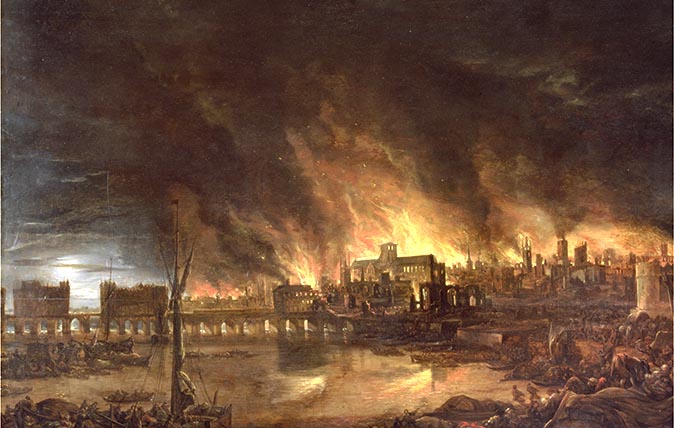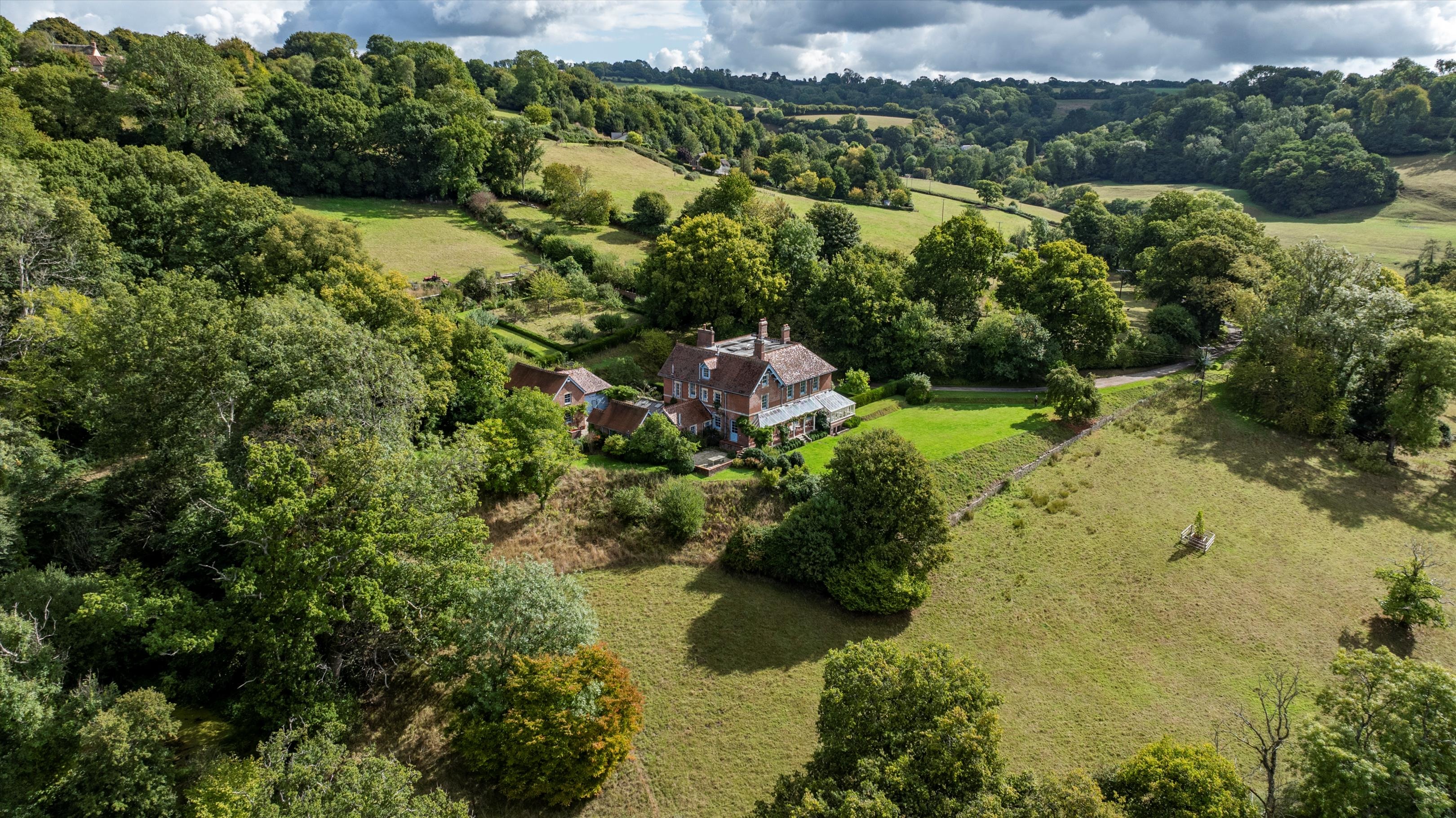Where the Great Fire of London began
Think you know where the Great Fire of London started? Think again.


Everyone knows that the Great Fire of London in 1666 (350 years ago this year) began in Pudding Lane. Look closely at the existing accounts of the fire and you find they are vague about exactly where in Pudding Lane. Astonishingly, knowledge of where one of Britain’s greatest urban disasters began has been lost.
A commemorative stone was placed on the site in 1680, blaming Catholics for the fire, but it was removed in about 1750, not because of greater honesty, but because too many people stopped to look at it. This was before there were street numbers, which would have made the site easily identifiable.
A plan of 1679 recently discovered among the City Corporation’s records at London Metropolitan Archives has now pinpointed the exact site. It shows an empty L-shaped plot belonging to the City on the east side of Pudding Lane, and on it is written ‘Mr Fariners grounde there the Fyer began’. This was Thomas Farriner, the baker, from whose oven and bakehouse the fire spread. The plot can be identified on later maps as 23, Pudding Lane.

It appears with exactly the same shape on plans of 1886 for the creation of Monument Street, which crosses Pudding Lane, and is now within the roadway of Monument Street; the short part of the L clips the pavement on the south side. Here then was the house where the alarm was raised at about 2am on September 2. From here, Farriner and his family escaped through an upstairs window to an adjoining house and, here, the maid who refused to make the dangerous climb became the first victim.
The area immediately behind the next plot (Mr Taynton’s on the plan) was identified in 1679 as the small yard where Farriner had kept his wood for firing the oven, so here the fire found its first fuel. The Monument provides the final clue. Its inscriptions state that the fire began 202ft to the east. Those who measured the distance must have thought they knew exactly where the fire began and this can only mean Farriner’s oven, despite his denial that it began there.
Tracing 202ft takes us almost to the back of the main part of the plot, or to the middle of the short part of the L, so the latter is the probable site. The fateful oven was therefore in the southern lane of Monument Street about 60ft east of Pudding Lane.
A full account of this research will appear in the ‘London and Middlesex Archaeological Society Transactions’ this year
Exquisite houses, the beauty of Nature, and how to get the most from your life, straight to your inbox.
Country Life is unlike any other magazine: the only glossy weekly on the newsstand and the only magazine that has been guest-edited by His Majesty The King not once, but twice. It is a celebration of modern rural life and all its diverse joys and pleasures — that was first published in Queen Victoria's Diamond Jubilee year. Our eclectic mixture of witty and informative content — from the most up-to-date property news and commentary and a coveted glimpse inside some of the UK's best houses and gardens, to gardening, the arts and interior design, written by experts in their field — still cannot be found in print or online, anywhere else.
-
 Haute dogs: How fashion’s finest would dress 11 dogs and one very spoilt cat if only they had the chance
Haute dogs: How fashion’s finest would dress 11 dogs and one very spoilt cat if only they had the chanceWe’ve matched some much-loved breeds to the designers that share their history, temperament and vibe — because why not. Illustrations by Tug Rice.
-
 Utterly wonderful country homes for sale across Britain, from a 10-bedroom mansion to a Devon hideaway, as seen in Country Life
Utterly wonderful country homes for sale across Britain, from a 10-bedroom mansion to a Devon hideaway, as seen in Country LifeFrom an irresistibly charming house in Devon to a 400-year-old commutable home in Hertfordshire, here's our pick of some of the best homes to come to market via Country Life in the past week.
